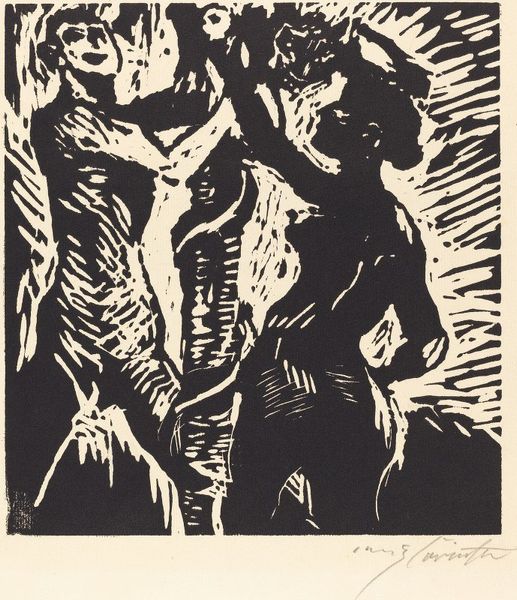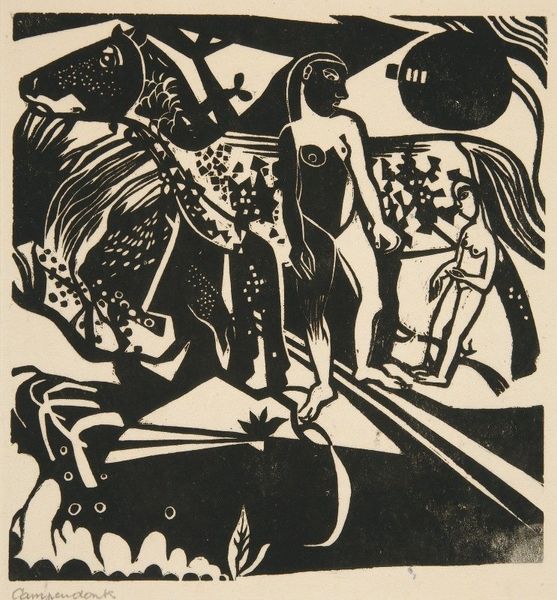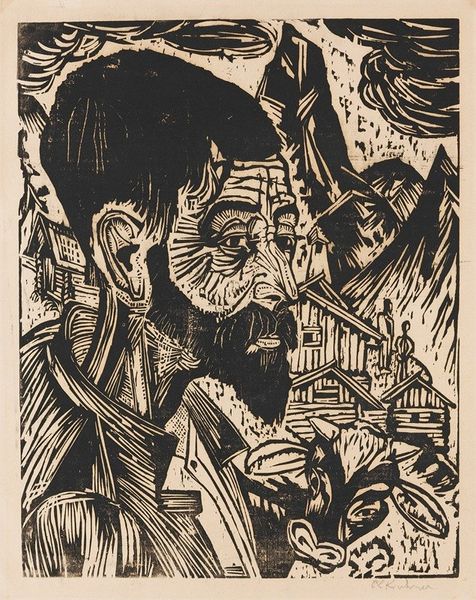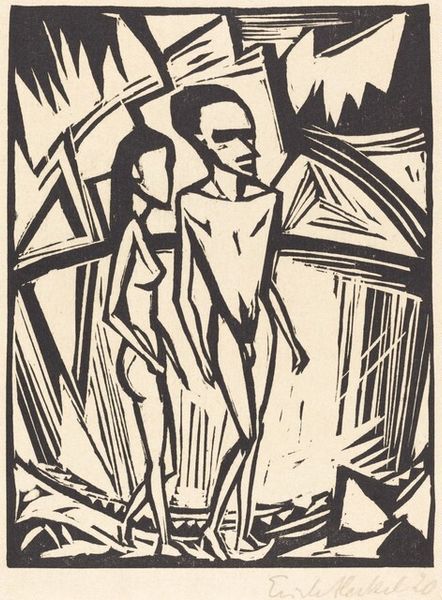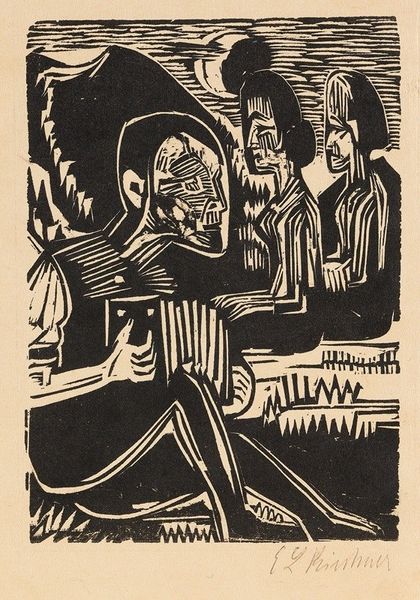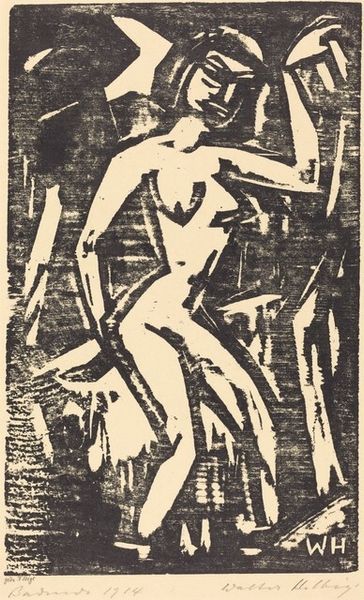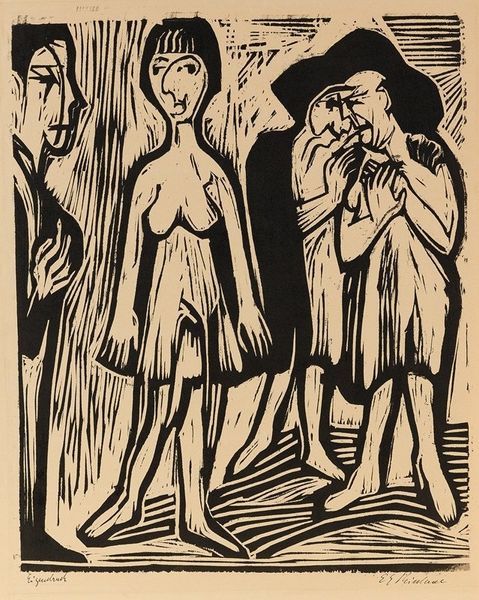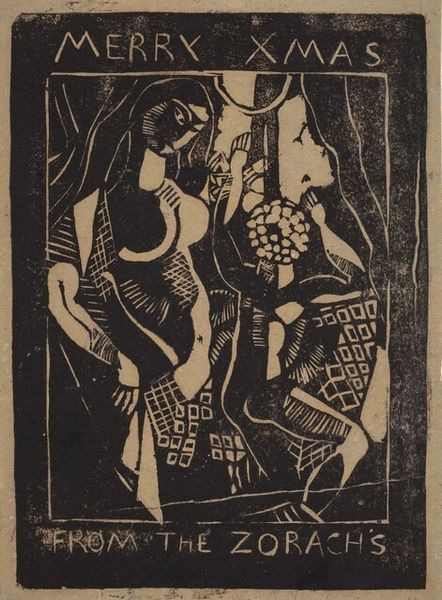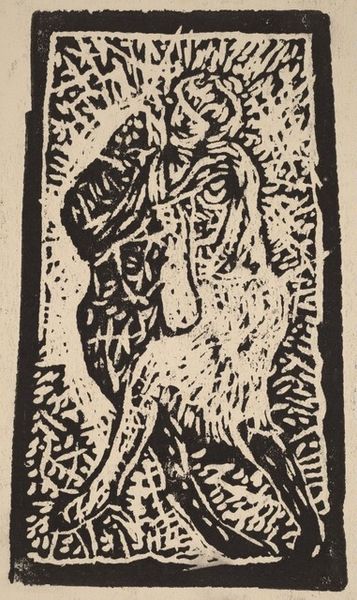
print, ink, woodcut
#
narrative-art
# print
#
pen illustration
#
figuration
#
abstract
#
ink line art
#
ink
#
pen-ink sketch
#
expressionism
#
woodcut
#
line
#
history-painting
Copyright: Public Domain: Artvee
Curator: Lovis Corinth created this evocative woodcut, "Expulsion from Paradise," in 1919. It's a striking depiction of a well-known biblical scene. Editor: My initial impression is of raw emotion. The stark contrast and heavy lines contribute to a sense of despair and disruption. Curator: Indeed, the high contrast inherent to woodcut intensifies the emotional drama. Note how Corinth uses line to create textures—chaotic in the background, reflecting the cataclysm of the expulsion. It reinforces the turmoil. He clearly conveys cultural memory using figuration, recalling centuries of depictions of this very moment. Editor: I’m struck by the labor-intensive nature of the woodcut. Every line, every shadow, is deliberately carved away. Consider the physical effort and skill required to produce such a powerful image. This print isn’t just depicting expulsion but revealing the intensive practice that creates its stark imagery, an emphasis on what is taken away to be present in relief. Curator: The figures, Adam and Eve, appear almost grotesque in their grief. This isn't an idealized paradise; Corinth seems more focused on the psychological impact of their transgression. Their expressions, etched so sharply, reflect a profound loss of innocence and belonging. The symbolic weight of their nakedness further highlights their vulnerability. Editor: And look closely—the ink itself seems uneven in places, which, depending on the print run and choices, suggests something about the value we are placing on pristine vs the mark of production. I wonder about Corinth’s workshop setup. Did he make the cuts himself, or was it delegated? This speaks to craft hierarchies within art production, particularly during this period. Curator: Those are interesting points to consider. Regardless, his Expressionistic style adds another layer of complexity. It wasn’t only about the narrative of the fall; Corinth infused it with his own subjective experience of anguish, undoubtedly shaped by the societal anxieties following the first World War. He translates individual suffering into universal narrative using expressive figuration, amplifying cultural memory. Editor: It makes you wonder about access, too. How many impressions were made? For whom? And at what price? Printmaking allowed artists like Corinth to make their work more widely available, shifting the art object away from unique ownership to potentially larger consumption. The labor involved is significant, whether we think of individual work, workshop production or print runs that made works affordable. Curator: Reflecting on the weight of tradition Corinth draws from, one recognizes its deep hold on us as humans, our ability to embody certain archetypes again and again in shifting social situations. Editor: It’s truly amazing how much this small-scale print reveals. The intense labor alongside bold expressive strokes combine to show the fall’s devastating cost in more ways than one.
Comments
No comments
Be the first to comment and join the conversation on the ultimate creative platform.
